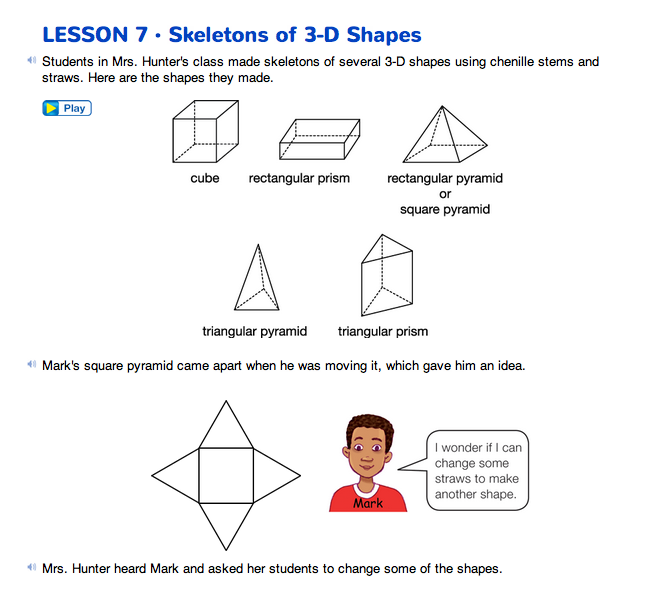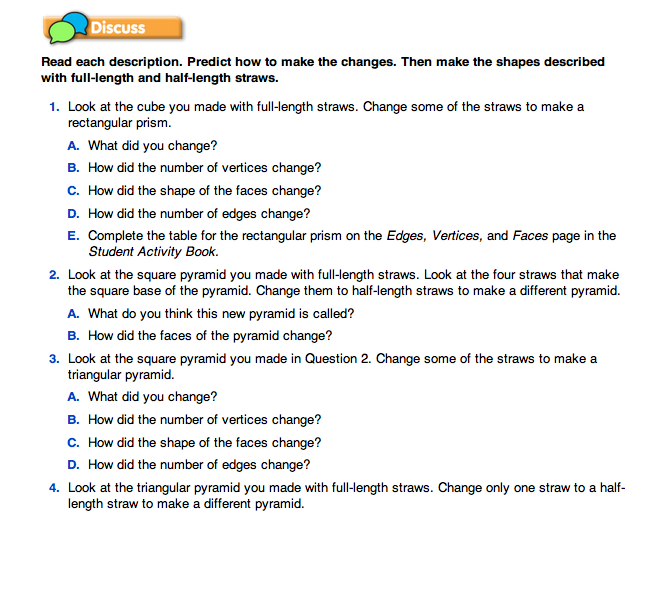Skeletons of 3-D Shapes
Est. Class Sessions: 2Developing the Lesson
Part 2. Manipulating Shapes
Manipulate 3-D Skeletons. Read together the vignette on the Skeletons of 3-D Shapes pages in the Student Guide. Distribute half-length straws to student pairs. Then read aloud Questions 1–5, stopping to ask students to make a prediction before they modify the shapes as described in each problem. For example, before completing Question 1 students should predict which straws need to be changed to make the new shape and how the number of vertices, shape of faces, and number of edges will change or which will stay the same. See the TIMS Tip.
Have students confirm their predictions by modifying their models as described in the problem. Students should also analyze the new shape to compare the properties of the new shape to those of the original shape. Students should analyze the number of edges, parallel edges, vertices, and right angles. See Figures 3–5 for solutions to Questions 1–3.
Display a cube and two different rectangular prisms that are not cubes from the Power Solids® or class collection of 3-D shapes.
Ask:
Display several different kinds of prisms from the Power Solids® or class collection of 3-D shapes (e.g., triangular prism, square prism, hexagonal prism).
Ask:
Display the square pyramid and the triangular pyramid.
Ask:

















